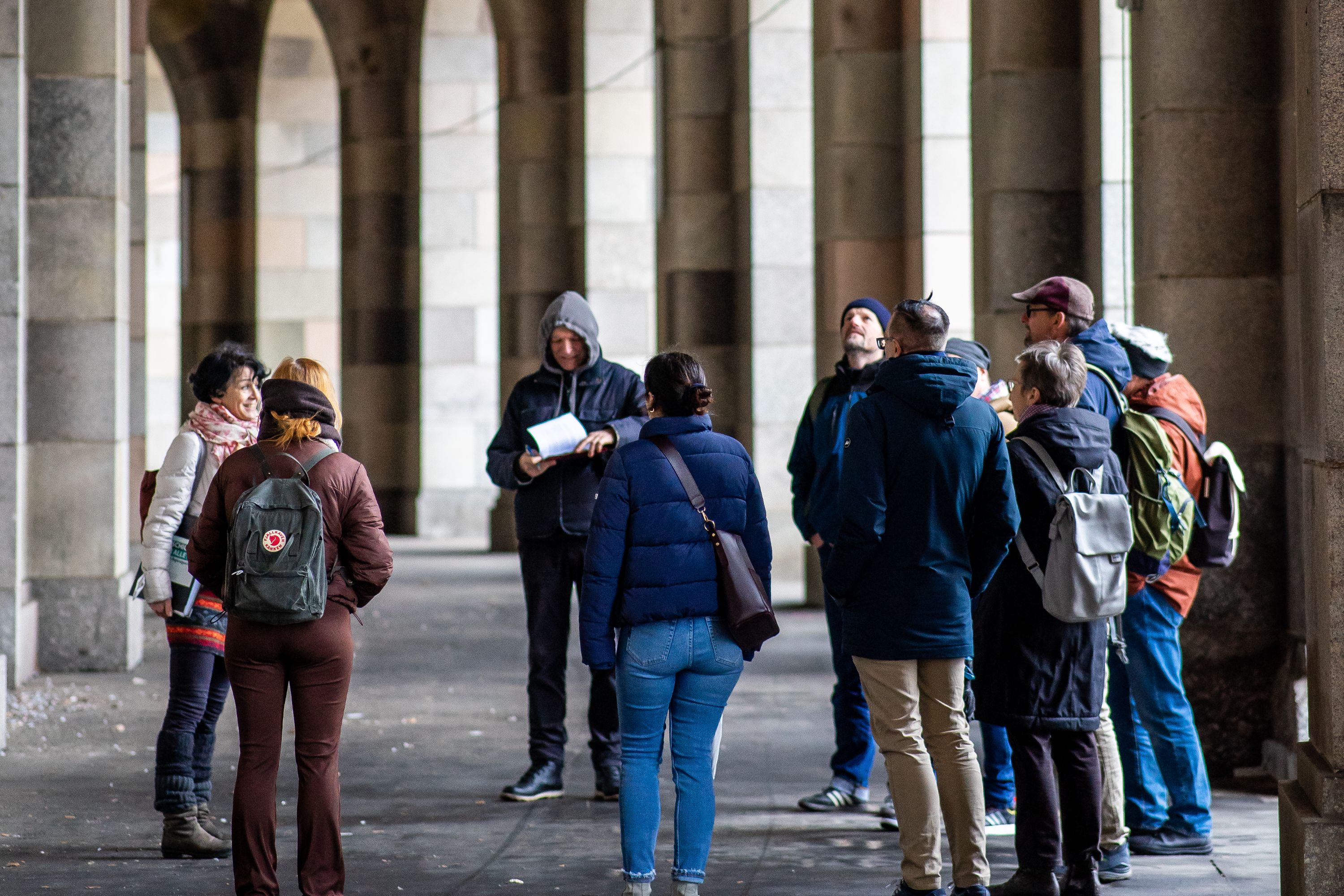
3rd Reich Tour Nuremberg
This tour is designed by a born and raised Nuremberg local. It includes the history of the rally grounds, as well as a brief overview of the Nuremberg laws and Nuremberg trials. Beside the historical aspects we also discus Nurembergs way to deal with its Nazi-heritage and how the 3rd Reichs history is reflected in our modern education, collective memory and culture.
Options
3rd Reich Tour Nuremberg
What's included in 3rd Reich Tour Nuremberg
(Subject to Option Inclusions)Itinerary
Kongresshalle Nurnberg
The Kongresshalle in Nuremberg, part of the former Nazi Party Rally Grounds, was designed by architects Ludwig Ruff and Franz Ruff in the 1930s. Inspired by Rome's Colosseum, it was intended to host 50,000 people but was never completed due to WWII. The massive, horseshoe-shaped structure stands as a haunting symbol of Nazi ambition and propaganda. Post-war, it was left largely untouched and now houses the Documentation Center, which educates visitors about the Nazi era, preserving the site as a powerful reminder of Germany’s history.
The Luitpoldarena in Nuremberg was a vast parade ground built in the 1930s for Nazi Party rallies, capable of hosting over 100,000 people. It was built around "Ehrenhalle" (Hall of honor) for the WWI veterans. While the Nazis missused it for honoring the fallen "old-comrades" of the "Hitlerputsch" it is now used as a public park, preserving some remnants as a somber reminder of Nazi history and the dangers of totalitarianism.
The "Great Street" at the Nazi Party Rally Grounds in Nuremberg was a 1.5-mile-long granite road designed by Albert Speer as a central axis for marches and parades. Oriented toward the imperial city of Nuremberg, it symbolized the Nazis' attempt to link their regime to Germany's historic past. The street was intended for grand military processions and formations during rallies but was barely used due to the outbreak of WWII.
Inclusions
- Local tourguide fluent in English language
- Tips
- Wheelchair accessible
- Infants and small children can ride in a pram or stroller
- Service animals allowed
- Public transportation options are available nearby
- Transportation options are wheelchair accessible
- Travelers should have at least a moderate level of physical fitness
Meet
Pickup and Dropoff
You will make your own way to the meeting points
Meeting / End Points
- Look for the white umbrella with the green logo





